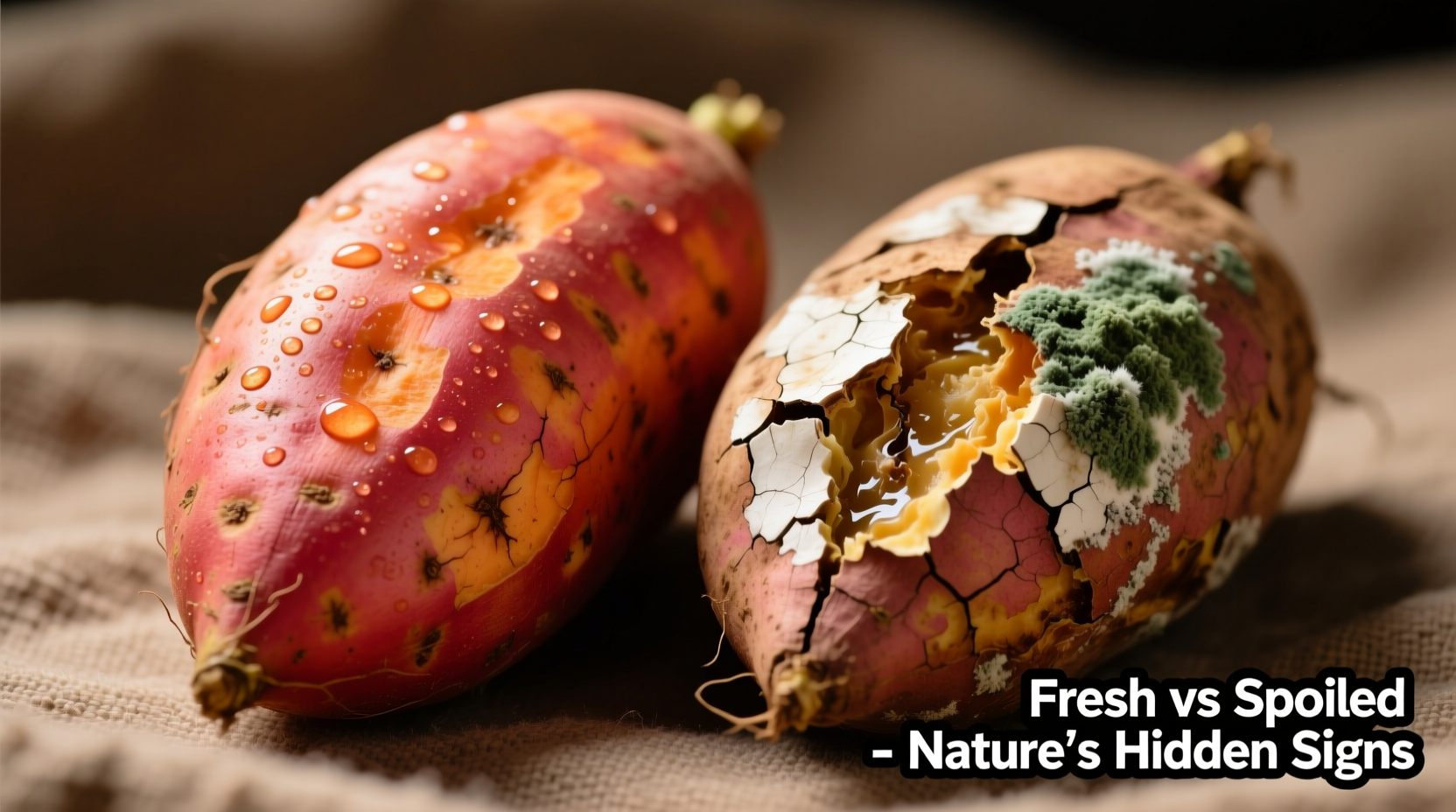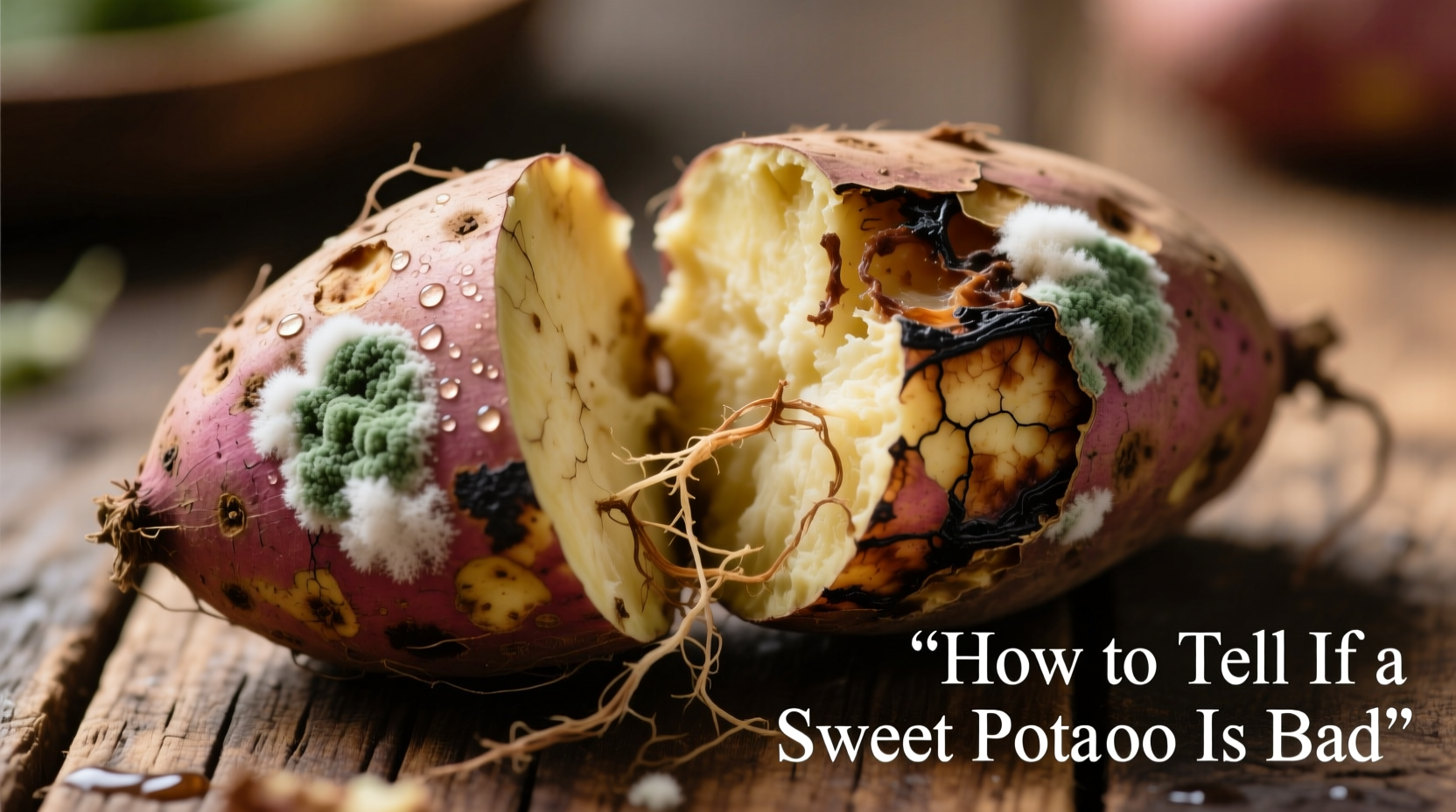If your sweet potato has extensive mold growth, deep black or brown spots, a mushy texture, or emits a sour, unpleasant odor, it's bad and should be discarded immediately. Minor surface discoloration or small sprouts can often be cut away, but when in doubt, throw it out to avoid foodborne illness.
Discovering questionable sweet potatoes in your pantry can cause real kitchen anxiety. As someone who's handled thousands of produce items in professional kitchens and taught food safety workshops for home cooks, I've seen how often people struggle with this simple but critical food safety question. Getting it wrong could mean wasted food or, worse, a stomach-churning experience. This guide cuts through the confusion with clear, science-backed indicators you can trust.
Why Proper Sweet Potato Inspection Matters
Sweet potatoes rank among the top 10 most wasted vegetables in American households according to USDA data. Much of this waste happens because people can't accurately determine spoilage. More concerning, improperly stored or spoiled sweet potatoes can harbor Aspergillus niger mold, which produces toxins that aren't destroyed by cooking. Learning proper identification protects both your health and your grocery budget.
Your Step-by-Step Visual Inspection Process
Follow this professional kitchen-tested inspection sequence for accurate results. Start with visual examination before moving to texture and smell checks.
| Condition | Good Sweet Potato | Bad Sweet Potato |
|---|---|---|
| Surface Color | Uniform skin color (orange, purple, or white depending on variety) | Large black, brown, or white patches; significant discoloration |
| Mold Presence | No visible mold | Fuzzy white, green, or black mold growth |
| Moisture Level | Dry skin | Wet spots, oozing liquid, or damp areas |
| Sprouting | Small sprouts (1-2 inches) that can be cut away | Extensive sprouting with shriveled appearance |
Texture Tells the Truth: What Your Fingers Reveal
Visual inspection alone isn't enough. Proper texture assessment requires gentle but firm pressure:
- Firmness test: A fresh sweet potato should feel solid throughout. Gently squeeze - if any area yields significantly more than others, it's beginning to rot internally.
- Pit test: Press your thumb against the skin. Good sweet potatoes resist indentation. Spoiled ones leave temporary or permanent dents.
- Wet spots: Any slimy or excessively moist areas indicate bacterial growth and mean immediate discard.
According to the FDA's Safe Food Handling Guidelines, soft spots that penetrate more than 1/4 inch into the flesh compromise the entire vegetable's safety, not just the affected area.
Smell Test: Your Nose Knows Before Your Eyes Do
Sweet potatoes developing spoilage often emit subtle odor changes before visible signs appear:
- Fresh sweet potatoes have an earthy, slightly sweet aroma
- Early spoilage produces a faint vinegar-like smell
- Advanced spoilage creates a distinctly sour, unpleasant odor
- Moldy specimens often smell musty or like damp basement
Don't be fooled by the natural sweetness of good sweet potatoes. If the aroma makes you hesitate or instinctively pull your nose away, trust that reaction - it's your body detecting potential spoilage.

When to Save vs. When to Toss: The Professional's Decision Framework
Not every imperfection means automatic discard. Use this decision tree developed through years of professional kitchen experience:
- Save and use immediately: Small surface discolorations (less than 10% of surface), minor sprouting (under 2 inches), shallow soft spots (less than 1/4 inch deep)
- Cut away affected areas: Localized mold (cut 1 inch beyond visible mold), small black spots (remove with knife), minor surface blemishes
- Discard immediately: Extensive mold growth, deep black or brown spots throughout, mushy texture, sour odor, wet or slimy areas, significant shriveling
The University of Minnesota Extension program confirms that while minor imperfections are common in root vegetables, cross-contamination from mold can occur through the vegetable's vascular system, making seemingly unaffected areas potentially unsafe.
Storage Secrets to Maximize Freshness
Proper storage prevents premature spoilage. Follow these evidence-based methods:
- Avoid refrigeration: Cold temperatures convert starches to sugars too quickly and can cause hard centers
- Optimal environment: 55-60°F (13-15°C) with 85-90% humidity - a dark pantry works better than most kitchen cabinets
- Never store near: Apples, bananas, or other ethylene-producing fruits which accelerate sprouting
- Check regularly: Inspect stored sweet potatoes weekly and remove any showing early spoilage signs
Research from the USDA Agricultural Research Service shows that sweet potatoes stored at room temperature (70°F/21°C) lose quality 300% faster than those kept at optimal temperatures. This explains why many home cooks experience rapid spoilage - their storage conditions simply aren't ideal.
Safety First: Understanding the Real Risks
Eating spoiled sweet potatoes isn't just unpleasant - it carries genuine health risks:
- Mold toxins can survive cooking temperatures up to 500°F (260°C)
- Bacterial growth can cause food poisoning with symptoms appearing within 4-12 hours
- Black rot (Ceratocystis fimbriata) produces toxins that aren't destroyed by heat
The Centers for Disease Control reports that root vegetable-related foodborne illness accounts for approximately 2% of all produce-related cases annually. When you're uncertain about a sweet potato's condition, remember this professional kitchen mantra: "When in doubt, throw it out."
Common Questions About Sweet Potato Freshness
Here are answers to the most frequently asked questions I receive from cooking workshop participants:
Can I eat a sweet potato with small black spots?
Small black spots (less than 1/4 inch deep) can be cut away with a 1-inch margin around them. However, if the spots are deep, widespread, or accompanied by softness, discard the entire sweet potato as mold may have spread internally.
How long do sweet potatoes last in the pantry?
Properly stored sweet potatoes (in a cool, dark place with good airflow) typically last 3-5 weeks. At room temperature (70°F/21°C), they begin deteriorating after 2-3 weeks. Never store them in plastic bags, which trap moisture and accelerate spoilage.
Are sprouted sweet potatoes safe to eat?
Small sprouts (under 2 inches) can be removed, and the sweet potato remains safe to eat if the flesh is still firm. However, extensive sprouting with shriveling indicates significant nutrient loss and potential spoilage - these should be discarded.
Can I freeze sweet potatoes to extend their shelf life?
Yes, but only after cooking. Raw sweet potatoes don't freeze well due to their high water content. Bake or boil them first, then cool and store in airtight containers. Properly frozen cooked sweet potatoes maintain quality for 10-12 months.
Why do my sweet potatoes get hard after cooking?
Hard centers usually indicate improper storage. Sweet potatoes stored below 55°F (13°C) develop hard centers that won't soften during cooking. Always store sweet potatoes at room temperature (55-60°F/13-15°C) to prevent this issue.











 浙公网安备
33010002000092号
浙公网安备
33010002000092号 浙B2-20120091-4
浙B2-20120091-4